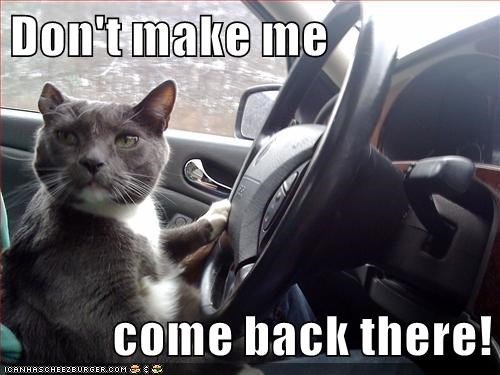You are using an out of date browser. It may not display this or other websites correctly.
You should upgrade or use an alternative browser.
You should upgrade or use an alternative browser.
Gen 1 with 4 Auto (TOD)
- Thread starter Primez
- Start date
Disclaimer: Links on this page pointing to Amazon, eBay and other sites may include affiliate code. If you click them and make a purchase, we may earn a small commission.
mashtastic
Full Access Member
“Triggered” says the demented Sasquatch rambling about how his t-case is the “strongest because it doesn’t have clutches”FTO has been triggered, maybe this will help.

Talk about having your head up your a$$

mprice1234
SVT Gen 1 Rules
Remember now, we have all been warned about the name calling and trash talking other members. Bad behavior like this can lead to Moderators banning offenders from the forum! Let's all play nice!“Triggered” says the demented Sasquatch rambling about how his t-case is the “strongest because it doesn’t have clutches”
Talk about having your head up your a$$
Cody Templeton
FRF Addict
I remember now why I have FTO blocked, never having to see his posts makes the forum a lot less ******.
Primez
Active Member
No, the TOD does not bind ever. TOD has clutch plates instead of a fixed lock between front and rear that will allow slip for this scenario. You’ll burn out the clutch plates and toast the TC before you get binding. The front open or LSD should also allow and compensate for different wheel speeds. Traction control helps here too.I was wondering something similar in the sense, will the TOD kick in while making that turn, engage the front axle and immediately begin binding ? I don’t see an issue in a straight line but could beat the crap out of the front end if you left it in TOD mode a lot (could engage it just by spinning the the right rear on dry pavement).
Primez
Active Member
Worth noting that the first gen TODs from 12-14 do not have a full lock. It’s clutch plate only. 4H and 4L just basically is full pressure. But yeah, if you’re like totally crammed up on some rocks, in 4L, and trying to climb boulders, definitely want to be careful if the TC starts to slip / get hot. That’s the real drawback of this mod. The Gen 2 TOD has clutch plates for auto and a full lock for hi/loI owned a gen 2 for a while, the 4 auto was nice.
binding in 4wd comes from the different distances travelled by the tires as you move. On soft surfaces, no big deal, the tires slip and you don't notice it. On high traction surfaces, this difference causes the driveline to bind up until the internal stresses are high enough to cause a wheel to slip on that much sticker surface.
In 4 auto, the transfer case is basically like a limited slip differential. It provides torque to both axles, but allows the clutches to slip as there is differences in wheel travel distance . . . eliminates the binding.
When switched into 4 high, with the "high lock" transfer case, it becomes like a spooled differential as opposed to a limited slip, this is what causes the driveline bind.
4High on dry pavement . . . bad
4 Auto on dry pavement . . . do it all day long, that's what its for
(Don't flame me for an overly simplified explanation, I understand there are many nuances within my response . . . but nobody wants to read a 3 page post with all the science and math equations :-D )
In the same regard, in very low traction situations, the auto function somewhat limits your ability to apply torque to the wheel with the traction . . . and the clutches will overheat. So, in very low traction situations, 4 High for the win.
Stepping into the “academics” of how the TOD works, curious what triggers the clutches engagement and its “percentage”. It would seem to me that TC would be the primary trigger for engagement, but “100%” clutch engagement would make me think you would at least get some feeing of the binding on the circumstances we were mentioning before (slightly wet roads, right hand turn and stepping on it). Curious if the system acknowledges wheel speed sensors in the front and the TC associated with the front to engage up to “100%”. It makes me think that anything full dirt or snow would be better served with 4H to ensure full front axle engagement from the second you may be losing traction.
Similar threads
- Replies
- 7
- Views
- 1K
- Replies
- 2
- Views
- 1K
- Replies
- 1
- Views
- 539
- Replies
- 4
- Views
- 1K
Members online
- ToadSmasher2K1
- Andy0424
- hawjdude
- scpete24
- jond
- Jeffrey Sanchez
- SilverGen1
- TTownTRX
- elpechedepeche
- gobluejd
- svc
- Bubbasuwannee
- SurfRaptor
- Badboy4fun_wa
- Bozz
- taquitos
- 256fail
- stonecrusher
- Frogger22
- pughde
- AARaptor
- KingKoopa17
- Raptor_Joy
- GordoJay
- P4SHOCAT
- thechamp408
- SuperRaptor
- mdamon
- Waterfowler41
- CleverGirl_
- Johnny@Apollo-Optics
- avaraptor
- HotTraxx
- JohnyPython
- mleaky
- RivRaptor
- tabvette
- fultonbreaker
- Dudebrodude
- MurderedOutSVT
- xturdfergusonx
- youngmb
- JTavarez
- Keonkeys
- billy8
- Heinz_Nation
- Arrow1
- DFS
- steved57
- Burt
Total: 6,208 (members: 88, guests: 6,120)





